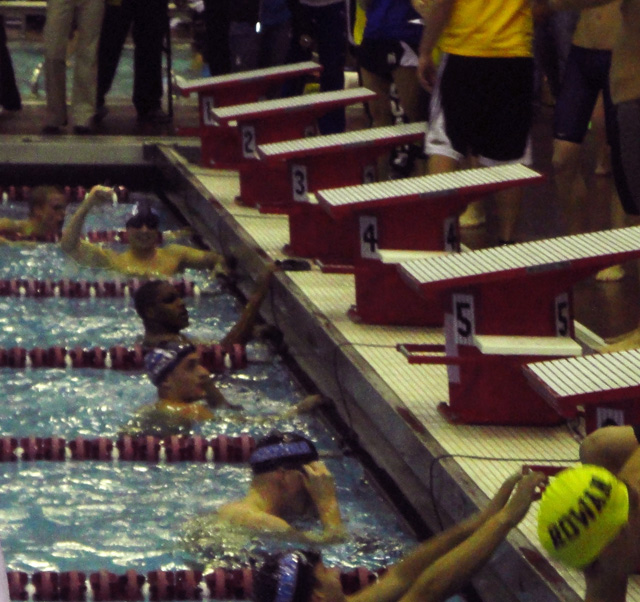As a Latina I Can Swim Just as Fast as You

By Basilisa Alonso
Bronx Journal Staff Writer
Stepping up on the swimming blocks, palpitations make my heart feel like it will burst. Adrenaline is running through every limb. The person next to me is using intimidation tactics, silently conveying with her preparation stretches a message: “I’m better than you.” The whistle blows, the harshness of the cold water sends a shock to my body. Before I have time to acclimate, the race is over.
Competing in large swim meets has always been a double challenge. Not only have I always felt the need to compete and succeed in my race, but I’ve always felt like I’ve had something else to prove to everyone: I’m a minority and as a Latina I can swim just as fast as you.
At the recent Metropolitan Conference swim meet, 23 teams participated, bringing in more than 100 swimmers. During those three days, I counted no more than a dozen black swimmers (but more Latinos.) However, the majority of the participants were white.

I started swimming at age 14 at a Yonkers high school. Every year I always felt like the girl next to me thought I was no competition because I was not white. I do not know if it was racial paranoia or if that is what she actually thought.
Fast forward to college swimming. I entered college hoping to get faster, but unfortunately, economic stability was not in the cards for me. I could never practice as much as I would have liked since I was working two jobs and I was always tired. Leo Hudson, a sophomore on the SUNY maritime swim team and one of only two black swimmers in his team of about 50, believes that money is a factor. He says, “It’s inexpensive to learn [to swim] but expensive for competitive swimming.” Money, he says, “is an issue because minorities can’t afford proper practices, club fees and travel expenses.”
“It’s less expensive to buy a basketball than it is to swim,” Hudson added.

I always wondered why swimming is still predominately a “white” sport. For me, economics was always a big factor as well as the lack of accessible training facilities. Although I began my competitive swimming career at a local YMCA, my team and I were at a disadvantage from the start. The coaching staffs were lifeguards — most of whom had just learned how to swim themselves. Our pool was only 20 yards compared to the standard 25-yard pool. I desperately wanted to join a “real” team, but the closest was in White Plains, which was a 30-minute drive from where I lived.
Thirty minutes is not so bad right? But I did not have a ride, which meant I had to take the bus. An hour and a half bus ride to get to White Plains and to get to the pool? That was a twenty-minute walk. Hudson, who is a Bronx native, believes that lack of swimming facilities contributes to the low number of swimmers who are competitive “The black kids go to the facilities that they have, that are available to them.”
For now, minority youth have to navigate through rocky waters to pursue competitive swimming.
